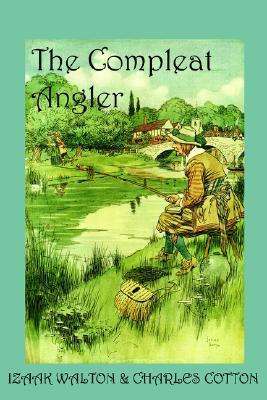Chapter X — The Compleat Angler
byChapter X – The Compleat Angler opens with Piscator exploring the intriguing nature of the bream, a fish noted for its breadth and gentleness, often seen in still ponds where it can grow remarkably fat and large. Its wide body and slow movements make it less challenging to catch, yet its appearance in large numbers brings an added thrill to the angler’s experience. Though not praised for flavor, its role in pond ecosystems and its visual elegance are highlighted. A remarkable anecdote from Gesner recounts a mysterious occurrence where bream vanished beneath the frozen surface of a Polish pond, only to reappear months later as if from hibernation. This event sparks a reflection on nature’s quiet cycles—how beneath still water and cold surfaces, life persists in hidden rhythms. Such marvels draw anglers closer to nature, urging them to observe more than just the line’s pull.
In France, bream enjoy a cultural reverence as a symbol of warm hospitality, captured in a saying that aligns the fish with hearty welcome. The text even mentions the bream’s curious ability to breed with roaches, creating an abundant but less esteemed hybrid. Such crossings, while biologically unusual, underline nature’s unpredictability and remind readers that abundance does not always equal excellence. Piscator begins to focus on the angler’s craft, introducing a meticulous process for baiting and preparing red worms, essential to lure this stately fish. Each detail—from the soil in which worms are kept to how they are presented—underscores the significance of care and preparation. The bream’s appetite may not be fierce, but it is discerning, and the angler must adapt to its leisurely feeding pace.
Much of the narrative is devoted to creating an effective ground-bait mixture, a blend of aromatic and visual appeal designed to gather bream in one spot. Piscator stresses the need for consistency and timing: a bait too early may be wasted, too late and the opportunity may pass. It is not merely about technique; it is a matter of patience and attentiveness to the water’s mood. As anglers gather early by the pond, their quiet movements and calculated gestures mirror the stillness of the fish below. The choice of float, the angle of the rod, and the silence between cast and bite all build toward the final reward—not just of a catch, but of being present in the rhythm of morning light and rising mist. It’s fishing not just for sustenance, but for solace.
Challenges in bream fishing often come from larger, more aggressive fish like the pike or perch, which can scatter the slower bream and disrupt the feeding pattern. Piscator outlines clever ways to deal with these threats, either by baiting them separately or adjusting fishing times to avoid their interference. His strategies are not combative but harmonious, aiming to reduce disturbance and maintain balance in the water. Every angler must be prepared to adapt; it is not brute force but awareness that determines success. Sometimes, it is better to leave a spot undisturbed, let nature recover, and return with renewed strategy. In this, angling becomes a lesson in respect—for the fish, the water, and the day’s quiet procession.
Throughout the chapter, Piscator’s tone is not just instructional but contemplative, drawing connections between the angler’s patience and the rhythms of life itself. The act of fishing for bream becomes a metaphor for steady effort, for learning when to act and when to wait. There’s wisdom in withholding as much as in pursuing, a truth often forgotten in pursuits measured only by outcome. The chapter closes not on a triumphant catch, but with a sense of shared understanding—between man, fish, and stream—that angling is as much about presence as it is about prize. Those who find joy in this balance are the ones who truly understand the meaning of the angler’s path.


